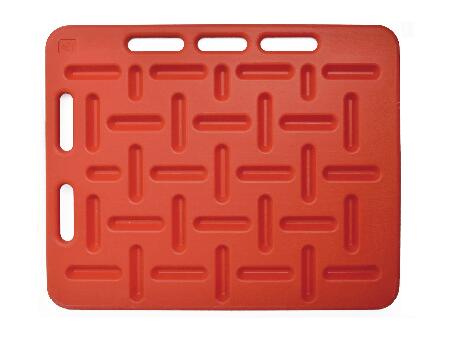Import and Export of Traditional Chinese Medicine ASEAN Increases 20% of Private Enterprises
Some Chinese provinces and cities and ASEAN countries have unique geographic advantages in the trade of traditional Chinese medicines. The Chinese in the region are concentrated and their medication habits are similar. In addition, the population of the ASEAN region is nearly 700 million. In recent years, with the increase in population and economy in the region, the local people’s awareness of health care has been increasingly strengthened, and the demand for traditional medicines has been increasing. In particular, most of the ASEAN regions are developing countries. The pharmaceutical industry has a relatively weak foundation and a high degree of dependence on drug imports. These are the favorable conditions for China's pharmaceutical companies to explore ASEAN's traditional medicine market.
From January to August 2011, China’s pharmaceutical foreign trade totaled 47.4 billion U.S. dollars, of which the volume of Chinese medicine trade was 1.94 billion U.S. dollars, a year-on-year increase of 42%. During the same period, China’s trade volume with ASEAN countries reached US$268 million, a year-on-year increase of 21.31%; China’s exports of Chinese medicine to ASEAN were US$209 million, an increase of 15% year-on-year; the total amount of Chinese medicine imported from ASEAN was US$58.77 million, Increased by 51%. This shows that China-ASEAN trade in Chinese medicine is embarking on the path of rapid development.
In the first eight months of 2011, China’s exports to ASEAN’s traditional Chinese medicines were basically stable. Only July’s export growth was higher, mainly due to the significant increase in the export of eucalyptus oil to Singapore.
In the first half of this year, the year-on-year increase in imports of Chinese medicine from ASEAN was mainly due to the substantial increase in the import of bird's nest from Malaysia. The growth rate in the past two months has been gradually stable.
Herbal Pieces and Extracts
Chinese herbal medicines, decoctions, and extracts consistently account for more than 80% of China's total exports of ASEAN's Chinese medicines. Since last year, China’s exports to ASEAN’s Chinese herbal medicines have remained stable. The average export prices have increased by about 11% year-on-year. The main export commodities are chrysanthemum, ginseng, codonopsis, astragalus, atractylodes, rhubarb, seed yellow, alfalfa and dry buckwheat. Among them, the rapid rise in export prices for the Codonopsis and Huang Qi, the export prices fell faster than the year of ginseng; exports grew faster than the year for the ginseng, export volume fell rapidly for the Pinellia. The main commodities exported by China to ASEAN are eucalyptus oil, inositol and fennel oil, of which the product with faster growth in exports from January to August is fennel oil, and the product with faster decline in export value is citronella oil.
Chrysanthemum: Chrysanthemum is China's largest export product to ASEAN. In the first eight months of this year, the export volume and price are relatively stable. The export destination countries are Singapore, Vietnam, Malaysia and Thailand. The main export provinces are Zhejiang, Guangxi and Anhui.
Ginseng: As the country’s second largest export product to ASEAN, in the first eight months of this year, although the export volume of ginseng increased by 22% year-on-year, the export price has declined greatly. The main destination countries for China’s ginseng exports to ASEAN are Malaysia and Singapore.
Codonopsis: In the first 8 months of this year, the price of Codonopsis for ASEAN's exports increased rapidly. It is currently US$ 12.7/kg, up 48% year-on-year. The main export destinations are Singapore and Malaysia. The main export destination is Sichuan Province.
Fish oil bird's nest imports increased significantly
Last year, the amount of fish oil imported by China from ASEAN increased sharply, mainly due to the increase in the demand for crude fish oil (used for feed additives) from Vietnam in Vietnam. From January to August of this year, the amount of fish oil imported by China from ASEAN increased slightly by 3.6% compared with the same period of last year, and the price rose by 20% year-on-year.
China's bird's nest imports mainly come from Malaysia and Indonesia in the ASEAN region, because the price of bird's nest in the domestic market is higher than in Southeast Asia and other countries, there is a large profit margin. In 2010, the number of bird's nests imported by China from ASEAN was 9,229 kilograms, an increase of 32% year-on-year; the import price was 1,393 U.S. dollars per kilogram, a year-on-year increase of 42%. From January to August this year, the number of bird's nests imported by China from ASEAN was 7312 kg, an increase of 5.30% year-on-year; the import price was 2,076 USD/kg, an increase of 60% year-on-year.
Exports of Private Enterprises "Blowout"
The major provinces that China exports to ASEAN Chinese medicine products are Guangxi, Sichuan, Yunnan and Guangdong. From January to August 2011, there were a total of 607 Chinese enterprises that exported Chinese medicine products to ASEAN, an increase of 29 over the same period of 2010. State-owned enterprises were the main force for the export of Chinese medicine to the ASEAN market, accounting for up to 50% of the export value; the export value of private enterprises Accounting for 37.22% of the total; foreign-funded enterprises accounted for only 17.7% of export value. It is worth noting that in the first eight months of this year, the increase in exports of Chinese medicine by private companies was much higher than that of state-owned and foreign-funded enterprises.
The main destination countries for Guangxi's exports to ASEAN countries are Vietnam and Malaysia. The main products exported are medicinal herbs and decoction pieces, such as Atractylodes macrocephala, rhubarb, seed yellow, chrysanthemum, astragalus, Pinellia, and Chuanxiong, among which the larger increase in exports is Chuanxiong and Chrysanthemum, a large decline in export value is Pinellia. In the first eight months of this year, Guangxi's exports to Malaysia have increased significantly, while exports to Singapore have decreased significantly.
Problems and countermeasures
Although the overall development momentum of trade between China and the ASEAN Free Trade Area is good, there are still some problems in the current domestic Chinese medicine companies actually entering these markets:
All ASEAN countries have set access standards for medicines, but they have not formed a unified mechanism for mutual recognition. Some ASEAN countries have unstable political conditions, prevalence of counterfeit drugs, lack of intellectual property protection systems, and weak government supervision; some companies have insufficient knowledge of the ASEAN market. The utilization rate of the policies in the free trade zone is not high; the investment in developing enterprises in the ASEAN market is small and the development method is relatively simple; China's pharmaceutical products are still difficult to enter the mainstream channels such as local government procurement and public hospitals.
The author believes that Chinese enterprises will increase their efforts to expand the ASEAN market. The following countermeasures can be used for reference:
The first is to strengthen the study of the international market; the second is to strengthen the company's R & D capabilities and enhance the level of corporate supervision; the third is to find differentiated operations; fourth is to strengthen industry coordination and exchange; Fifth is to strengthen communication with the government authorities of export destination countries. Negotiate.
With the improvement of economic development level, the cost of land, labor, and raw materials in China continues to rise and gradually exceeds that of ASEAN countries. Domestic pharmaceutical companies can make full use of the abundant resources of ASEAN countries and solve many difficulties in domestic economic development. With the continuous implementation of the free trade zone, it is believed that more companies will enjoy the benefits it brings. Opening up the ASEAN market will be the right choice for Chinese companies.
Related>>>
China’s trade stability with ASEAN’s traditional markets
Vietnam, Singapore, Malaysia and Indonesia are the traditional markets for China’s trade with ASEAN countries. The export volume of Chinese medicines in these four countries accounts for 90% of China’s total exports to the ASEAN market. In the first eight months of 2011, China’s exports of Chinese medicine to the major ASEAN countries all showed an upward trend, with only exports to Malaysia and Brunei declining year-on-year, of which exports to Malaysia’s Chinese medicines dropped by 34.6% year-on-year.
Vietnam: China’s largest exporter of ASEAN’s traditional Chinese medicines, China’s main exports to Vietnam’s traditional Chinese medicine are Chinese herbal medicines and decoction pieces such as chrysanthemum, atractylodes rhizome, rhubarb, seed yellow, and yellow peony. In addition, China’s exports to Vietnam are also certain. The amount of lecithin (health supplement) and inositol (extract). In the first eight months of this year, the export price of Chinese chrysanthemum to Vietnam rose by 29% year-on-year, and the main export provinces were Guangxi and Anhui.
Singapore: The main commodities exported by China to Singapore's traditional Chinese medicine are eucalyptus oil extracts. In addition, there are a certain number of chrysanthemums, codonopsis and ginseng. In the first eight months of this year, the export volume and price of Singapore's ginseng in Jilin Province have all declined.
Malaysia: The main commodities exported by Malaysia to Malaysian medicines are mainly extracts. At the same time, a certain amount of proprietary Chinese medicines and herbs are also exported. Among them, the export herbs are mainly chrysanthemum, ginseng, and dangshen. In the first eight months of this year, China's exports and prices of Malaysian ginseng have both increased. However, China's exports of Malaysian extracts have both declined in quantity and prices.
The lightweight, but very durable, pig sorting panel produced by Honde is made of high-quality hard plastic to help workers easily move livestock such as pigs and sheep. We designed a product with circular holes in the top and side of the pig sorting panel, which made the operation of the pig sorting panel easy. The pig sorting panel is available in three different sizes, the largest size is 121 * 78mm and the weight is only 6.3kgs. If your order is large enough, we can also produce according to the drawings you provide. the pig sorting panel is ideal for large-scale farming equipment. Our pig sorting panel is light, small and ideal for young employees who can work with ease.


Pig Sorting Panel,Red Pig Sorting Panel,Plastic Pig Sorting Panel,Hard Plastic Panels For Pig,Sorting Panel,Sorting Hog Panels,Pig Sorting Board
HuangHua FengYi Honde Metal Factory , https://www.farrowingcratesfromchina.com